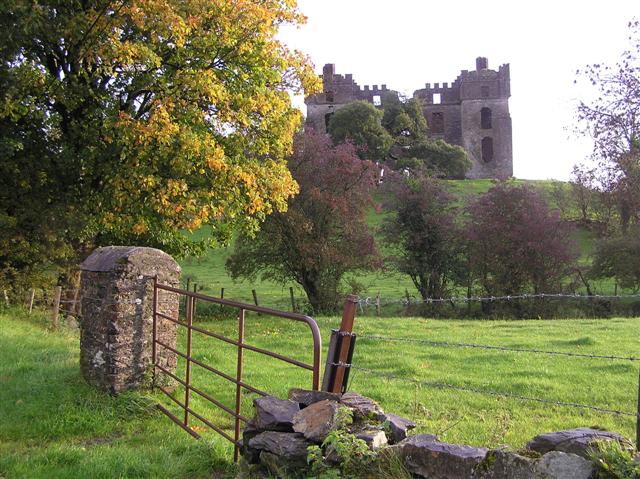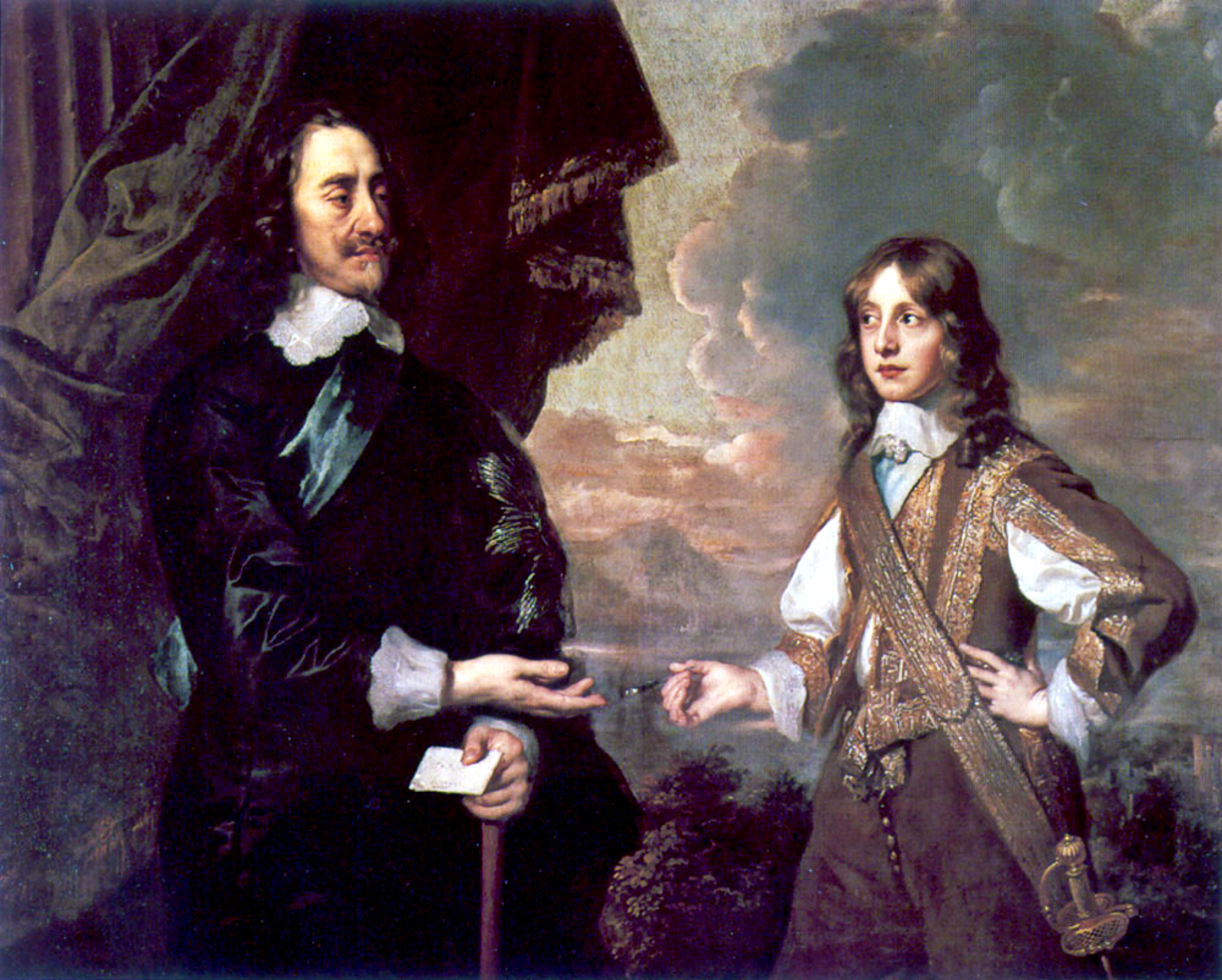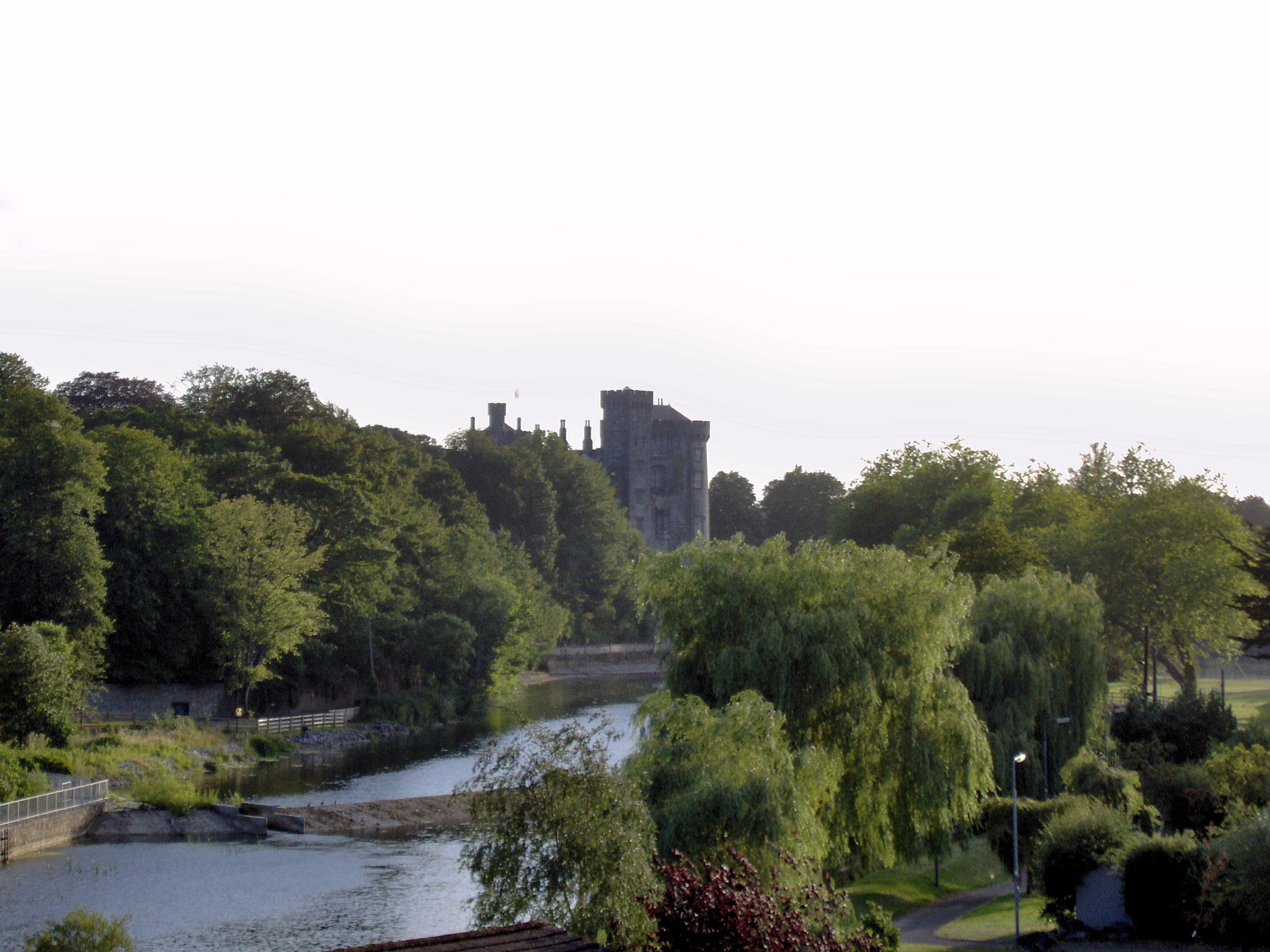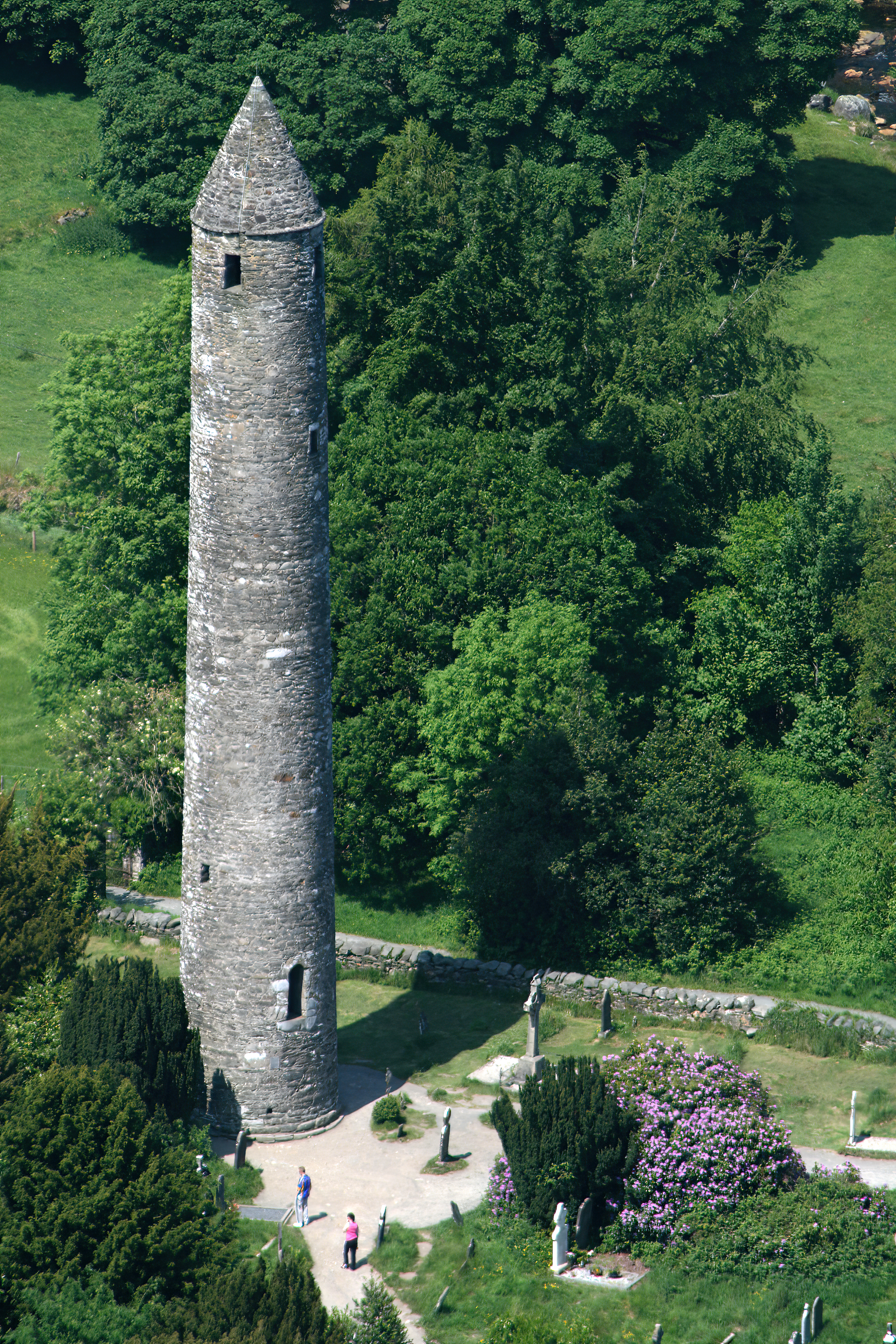|
Raphoe Castle
Raphoe Castle, also known as the Bishop's Palace, is a ruined early 17th-century castle on the edge of Raphoe, County Donegal, Ireland. The 'castle' was built in the 1630s for The Rt. Rev. Dr John Leslie, Church of Ireland Lord Bishop of Raphoe, from stone from a ruined round tower. Bishop Leslie was besieged within the castle during the Irish Rebellion of 1641, until he was relieved by the Laggan Army. Leslie was laid siege to again during the Cromwellian conquest of Ireland, with the castle surrendering in 1650. It was damaged by supporters of King James II & VII in 1689 during the Williamite War. A century later, in 1798, the castle was attacked again, this time by the United Irishmen, three of whom were killed during the Irish Rebellion of 1798. The castle was destroyed in an accidental fire in 1838.Noonan 2001, p.146. Citations References *Noonan, D (2001), "Castles & Ancient Monuments of Ireland", Aurum Press. Castles in County Donegal Castle A castle is ... [...More Info...] [...Related Items...] OR: [Wikipedia] [Google] [Baidu] |
Raphoe Castle - Geograph
Raphoe ( ; ) is a historical village in County Donegal, Ireland. It is the main town in the fertile district of East Donegal known as the Laggan, as well as giving its name to the Barony of Raphoe, which was later divided into the baronies of Raphoe North and Raphoe South, as well as to the Roman Catholic Diocese of Raphoe and the Church of Ireland ( Anglican) Diocese of Derry and Raphoe. The Burn Dale (also known in English as the Burn Deele) is a ''burn'' (a small river) that flows a short distance to the south of Raphoe. The Burn Dale eventually flows, via the village of Ballindrait, into the River Foyle just north of Lifford. Name ''Raphoe'', historically ''Raffoe'',Placenames Database of Ireland (see archival records) comes from the |
Church Of Ireland
The Church of Ireland ( ga, Eaglais na hÉireann, ; sco, label=Ulster-Scots, Kirk o Airlann, ) is a Christian church in Ireland and an autonomous province of the Anglican Communion. It is organised on an all-Ireland basis and is the second largest Christian church on the island after the Roman Catholic Church. Like other Anglican churches, it has retained elements of pre-Reformation practice, notably its episcopal polity, while rejecting the primacy of the Pope. In theological and liturgical matters, it incorporates many principles of the Reformation, particularly those of the English Reformation, but self-identifies as being both Reformed and Catholic, in that it sees itself as the inheritor of a continuous tradition going back to the founding of Christianity in Ireland. As with other members of the global Anglican communion, individual parishes accommodate different approaches to the level of ritual and formality, variously referred to as High and Low Church. Overvie ... [...More Info...] [...Related Items...] OR: [Wikipedia] [Google] [Baidu] |
Irish Rebellion Of 1798
The Irish Rebellion of 1798 ( ga, Éirí Amach 1798; Ulster Scots dialect, Ulster-Scots: ''The Hurries'') was a major uprising against British rule in Ireland. The main organising force was the Society of United Irishmen, a Irish republicanism, republican revolutionary group influenced by the ideas of the American Revolution, American and French Revolution, French revolutions: originally formed by Presbyterianism, Presbyterian radicals angry at being shut out of power by the Church of Ireland, Anglican establishment, they were joined by many from the majority Catholic population. Following some initial successes, particularly in County Wexford, the uprising was suppressed by government militia and yeomanry forces, reinforced by units of the British Army, with a civilian and combatant death toll estimated between 10,000 and 50,000. A French expeditionary force landed in County Mayo in August in support of the rebels: despite victory at Battle of Castlebar, Castlebar, they were als ... [...More Info...] [...Related Items...] OR: [Wikipedia] [Google] [Baidu] |
United Irishmen
The Society of United Irishmen was a sworn association in the Kingdom of Ireland formed in the wake of the French Revolution to secure "an equal representation of all the people" in a national government. Despairing of constitutional reform, in 1798 the United Irishmen instigated a republican insurrection in defiance of British Crown forces and of Irish sectarian division. Their suppression was a prelude to the abolition of the Protestant Ascendancy Parliament in Dublin and to Ireland's incorporation in a United Kingdom with Great Britain. An attempt to revive the movement and renew the insurrection following the Acts of Union was defeated in 1803. Espousing principles they believed had been vindicated by American independence and by the French Declaration of the Rights of Man, the Presbyterian merchants who formed the first United society in Belfast in 1791 vowed to make common cause with their Catholic-majority fellow countrymen. Their "cordial union" would upend ... [...More Info...] [...Related Items...] OR: [Wikipedia] [Google] [Baidu] |
Williamite War In Ireland
The Williamite War in Ireland (1688–1691; ga, Cogadh an Dá Rí, "war of the two kings"), was a conflict between Jacobite supporters of deposed monarch James II and Williamite supporters of his successor, William III. It is also called the Jacobite War in Ireland, Williamite Conquest of Ireland, or the Williamite–Jacobite War in Ireland. The proximate cause of the war was the Glorious Revolution of 1688, in which James, a Catholic, was overthrown as king of England, Ireland and Scotland and replaced by his Protestant daughter Mary and nephew and son-in-law William, ruling as joint monarchs. James's supporters initially retained control of Ireland, which he hoped to use as a base for a campaign to reclaim all three kingdoms. The conflict in Ireland also involved long-standing domestic issues of land ownership, religion and civic rights; most Irish Catholics supported James in the hope he would address their grievances. A small number of English and Scottish Catholics, an ... [...More Info...] [...Related Items...] OR: [Wikipedia] [Google] [Baidu] |
James II & VII
James VII and II (14 October 1633 16 September 1701) was King of England and King of Ireland as James II, and King of Scotland as James VII from the death of his elder brother, Charles II, on 6 February 1685. He was deposed in the Glorious Revolution of 1688. He was the last Catholic monarch of England, Scotland, and Ireland. His reign is now remembered primarily for conflicts over religious tolerance, but it also involved struggles over the principles of absolutism and the divine right of kings. His deposition ended a century of political and civil strife in England by confirming the primacy of the English Parliament over the Crown. James succeeded to the thrones of England, Ireland, and Scotland following the death of his brother with widespread support in all three countries, largely because the principles of eligibility based on divine right and birth were widely accepted. Tolerance of his personal Catholicism did not extend to tolerance of Catholicism in general, and the ... [...More Info...] [...Related Items...] OR: [Wikipedia] [Google] [Baidu] |
Cromwellian Conquest Of Ireland
The Cromwellian conquest of Ireland or Cromwellian war in Ireland (1649–1653) was the re-conquest of Ireland by the forces of the English Parliament, led by Oliver Cromwell, during the Wars of the Three Kingdoms. Cromwell invaded Ireland with the New Model Army on behalf of England's Rump Parliament in August 1649. Following the Irish Rebellion of 1641, most of Ireland came under the control of the Irish Catholic Confederation. In early 1649, the Confederates allied with the English Royalists, who had been defeated by the Parliamentarians in the English Civil War. By May 1652, Cromwell's Parliamentarian army had defeated the Confederate and Royalist coalition in Ireland and occupied the country, ending the Irish Confederate Wars (or Eleven Years' War). However, guerrilla warfare continued for a further year. Cromwell passed a series of Penal Laws against Roman Catholics (the vast majority of the population) and confiscated large amounts of their land. As punishment ... [...More Info...] [...Related Items...] OR: [Wikipedia] [Google] [Baidu] |
Laggan Army
The Laggan Army, sometimes referred to as Lagan Army, was a militia formed by Protestant settlers in the fertile Laggan Valley of County Donegal, Ulster, during the time of the Irish Rebellion of 1641. Background Following the defeat of Gaelic Ireland after the Nine Years War and the Flight of the Earls in 1607, the colonization of Ulster began in 1609. English and Scottish settlers, supported by the Crown, started to colonize the north-east province of Ulster. The settlers largely settled on land which was confiscated from Gaelic chiefs in Ulster, many of whom had fled from Ireland following the Irish defeat in the Nine Years' War. In 1641, the Irish rose up in a rebellion led by Felim O'Neill. This coup's purposes included putting an end to anti-Catholic discrimination, greater Irish self-governance, and to partially or fully reverse the plantations of Ireland. Although it was intended to be bloodless, the rebellion was characterized by rebel atrocities against Pro ... [...More Info...] [...Related Items...] OR: [Wikipedia] [Google] [Baidu] |
Irish Rebellion Of 1641
The Irish Rebellion of 1641 ( ga, Éirí Amach 1641) was an uprising by Irish Catholics in the Kingdom of Ireland, who wanted an end to anti-Catholic discrimination, greater Irish self-governance, and to partially or fully reverse the plantations of Ireland. They also wanted to prevent a possible invasion or takeover by anti-Catholic English Parliamentarians and Scottish Covenanters, who were defying the king, Charles I. It began as an attempted ''coup d'état'' by Catholic gentry and military officers, who tried to seize control of the English administration in Ireland. However, it developed into a widespread rebellion and ethnic conflict with English and Scottish Protestant settlers, leading to Scottish military intervention. The rebels eventually founded the Irish Catholic Confederacy. Led by Felim O'Neill, the rebellion began on 23 October and although they failed to seize Dublin Castle, within days the rebels occupied most of the northern province of Ulster. O'Neill ... [...More Info...] [...Related Items...] OR: [Wikipedia] [Google] [Baidu] |
Irish Round Tower
Irish round towers ( ga, Cloigtheach (singular), (plural); Literal translation, literally 'bell house') are early mediaeval stone towers of a type found mainly in Ireland, with two in Scotland and one on the Isle of Man. As their name indicates, they were originally bell towers, though they may have been later used for additional purposes. A tower of this kind is generally found in the vicinity of a church or monastery, with the door of the tower facing the west doorway of the church. Knowledge of this fact has made it possible, where towers still exist, to determine without excavation the approximate sites of lost churches that once stood nearby. Construction and distribution Surviving towers range in height from to , and to in circumference; that at Kilmacduagh monastery, Kilmacduagh being the highest surviving in Ireland (and leaning out of perpendicular). The masonry differs according to date, the earliest examples being uncut rubble, while the later ones are of neat ... [...More Info...] [...Related Items...] OR: [Wikipedia] [Google] [Baidu] |
Bishop Of Raphoe (Church Of Ireland)
The Bishop of Raphoe ( ) is an episcopal title which takes its name after the town of Raphoe in County Donegal, Ireland. In the Roman Catholic Church it remains a separate title, but in the Church of Ireland it has been united with another bishopric. History In the earliest period of the diocese, the episcopal see was often referred to as Tír Conaill (the surrounding region). It was also sometimes written as ''Ráith Both'', the Middle Irish spelling of the location. In 1266, Bishop Germanus of Derry forcibly transferred the Inishowen peninsula from the jurisdiction of the Diocese of Raphoe to the Diocese of Derry. After the Reformation, there were parallel episcopal successions. In the Church of Ireland, the title continued until 1834 when it united with Derry and formed the united bishopric of Derry and Raphoe. In the Catholic Church, the title continues as a separate bishopric. The current Incumbent is The Most Reverend Alan McGuckian, S.J., Bishop of the Roman Cat ... [...More Info...] [...Related Items...] OR: [Wikipedia] [Google] [Baidu] |
John Leslie (bishop Of Clogher)
John Leslie (14 October 1571 – 8 September 1671) was a combative Scottish royalist bishop of Clogher, who became known as the "fighting bishop" for his resistance to the Irish rebellion of 1641 and the parliamentarian forces. He is also notable for almost reaching the age of 100. Life The oldest son of George Leslie and Marjory, his wife, he was born at Crichie in Aberdeenshire, 14 October 1571. He was educated at Aberdeen and afterwards in France. He lived abroad for two decades, mainly in Spain, where his Latinity was admired. He was admitted to read in the Bodleian Library in 1618, and in 1624 he graduated Doctor of Divinity (DD) at Trinity College, Cambridge, '' per literas regias''. He was in favour with James I of England, who made him a privy councillor in Scotland, and with Charles I of England, who gave him the same rank in Ireland, and this he retained after the Restoration of Charles II. He was with George Villiers, 1st Duke of Buckingham at Rhé in 1627. His firs ... [...More Info...] [...Related Items...] OR: [Wikipedia] [Google] [Baidu] |









